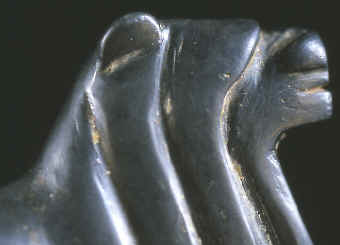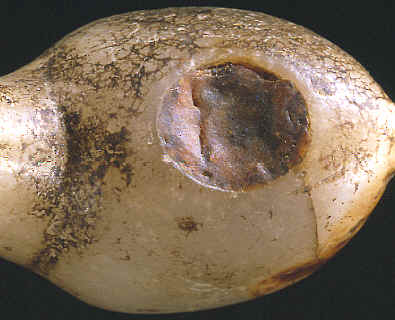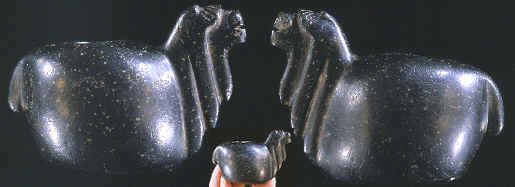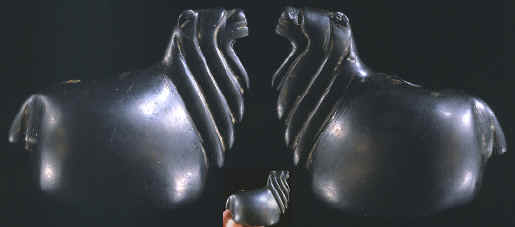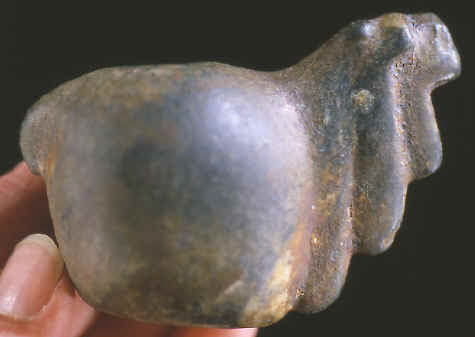|
|
|
Conopas are considered devotional objects or amulets that are believed to have the ability to bring good luck and prosperity. They are charged with protecting the house and even increasing the herds of the animals they represent. They are kept in houses and sometimes buried in fields. The holes in their backs are called a "qocha" (lagoon) and are the containers for offerings during the ceremony called "haywarisqa" (ceremony of offerings). Wine or other alcohol is poured in plus coca leaves mixed with llama fat called "untu" (tallow). |
|
|
|
|
Conopas were carved into many different styles. They can have long or short necks, eyes that bulge out or drilled, manes with three or more stepped layers down the neck and they come in a wide range of sizes. They're carved from fined grained stone of good quality & any color and the artistic quality is very fine. Conopas were made by roughly pecking out the shape of the animal with a hammer stone, then polishing the surface with sand and water. |
|
|
|
|
|
Conopas in the form of alpacas and llamas are still being made today in Peru. But the earliest examples were made long before the Spanish arrived. It's a tradition that has continued for many centuries. But there was a time when owning a conopa was dangerous. Next to gold the chief interest of the Spaniards was in Christianizing the Indians. |
|
|
Early in the 17th century (1600's) the Church began an ambitious campaign to stop idolatry and force the people into the Catholic religion. Native priests and sorcerers were arrested and isolated from their communities and the Catholic priests destroyed all the ceremonial sites, idols, and associated ritual instruments they could find. In 1607-1615 Viceroy Montesclaros burned 600 idols in the public square in Lima. An "Indian idolater" named Hernando Paucar was publicly flogged in the presence of the Viceroy. In 1617-1618 there were systematic witch-hunts by the priests. In the district of Chancay 679 "sorcerers" were discovered and 6,000 people confessed to idolatry. There were 3,418 conopas confiscated in the 31 settlements in the Archbishopric of Lima alone. |
|
|
By 1626 the clergy began to realize that little or nothing was being achieved. An archepiscopal report expressed horror that there was probably not one Indian that did not engage in idolatry and the fault was blamed on the small numbers of clergy in Peru. By 1650 the ambitious campaign to stop the native population from practicing their traditional ceremonial customs entered a class of harmless superstitions. The Church became much more tolerant of conopas and other associated ceremonial materials and the old ways. |
|
|
|
|
There are many ancient artifacts similar to conopas that must have been very important to the people that used them long ago. But their purpose has become irretrievably lost. Artifacts would have a lot to say if they could talk. Conopas are unique because the people who make them are still alive today and their meaning has not been lost to history. |
|
|
"REFERENCES"
1946,
"Handbook of South American Indians", "Vol. 2 The Andean
Civilizations" by Julian H. Steward, Editor, |
|
